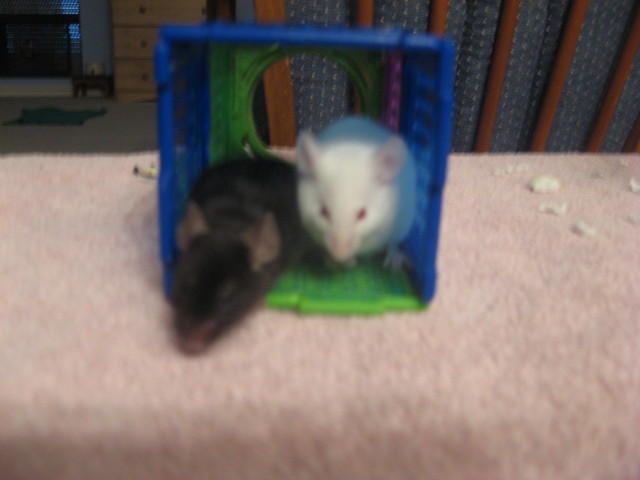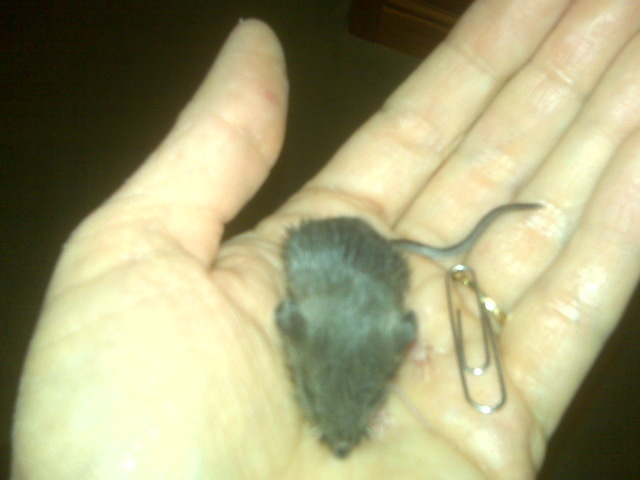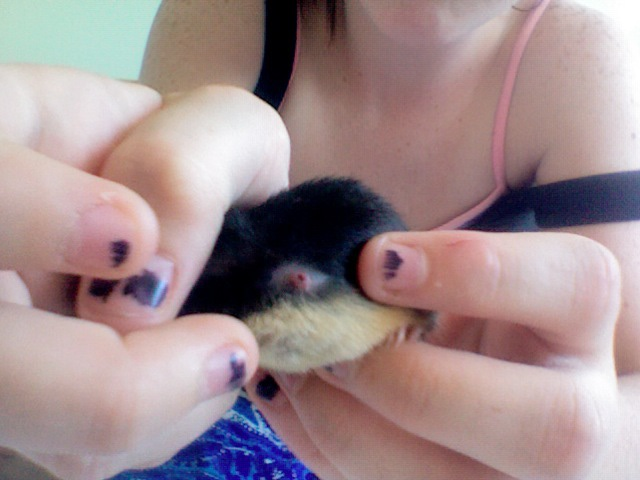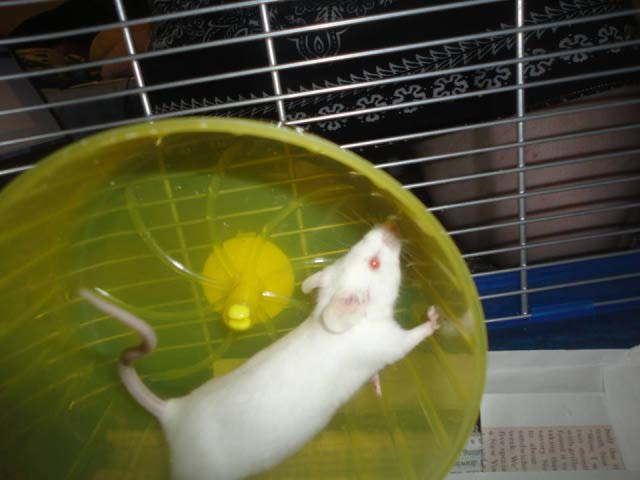QuestionQUESTION: I recently got two new female mice. I've had two mice before but they were never nervous with me. Do you have any tips on how to make them less nervous? I was also wondering if you knew why the mice will like rattle their tail against the cage?
ANSWER: Dear Tiffany,
Mice rattle their tails against the cage walls as a threat or warning that they are angry or ready to fight. It's kind of like a dog growling. I've even had my very sweet tame mice do it to me when they were in a bad mood.
One way to get the mice used to you is to put your hand in the cage, palm up, and be very still. They will eventually come and sniff at it and perhaps even stand on it. You can add a treat for better results-- choose something they will really like, like buttered popcorn, triscuits, or Fritos. Start with the treat near your hand but not on it, and wait till they eat it. Next time you can put the treat on your fingertips and wait till they take it. Gradually bring the treats up such that the mice must climb on your hand to get them. When they have done this a few times, gently lift the hand a little bit with the mouse on it, then gently set it down. The mouse will get used to a little motion this way. When you do succeed in picking them up, just hold them for a half-minute and put them back. This way they will learn that you are not going to hurt them or keep them from their cage when they come to you voluntarily.
At the same time you can also sometimes pick them up in some gentle manner such as a tail grab at the very base and immediate placement on your other palm, holding the tail until you can trust the mouse. A mouse who is too jumpy to let go of can be wrapped up in the bottom of your Tshirt until she quiets down. Keep her there for five minutes or so so long as she doesn't squeak. I always respect a mouse squeak. It means pain or fear, and I don't want my mice to experience either. Then slowly take her into your closed hand(s) and see if she will quiet down.
Once the mice are trustable not to jump, hold them a lot. They can sit on your shoulder or the back of your neck (they prefer under your shirt) or in your sleeve as you gently do other things (reading, watching TV; later more activities will work too.). Lots of stroking and interaction with the mouse to its face (talking to them is good) are great.
Good luck with your little pals!
squeaks n giggles,
Natasha
---------- FOLLOW-UP ----------
QUESTION: When they do rattle their tails should I back off or just keep my hand in the cage so they get used to me being there?
AnswerDear Tiffany,
If the mice rattle occasionally when your hand is in the cage, give them their space and take the hand out. But if they do it commonly then leave your hand-- they are just going to have to get used to you.
Squeaks n giggles,
Natasha

 All kinds of mouse baby questions!
Question
The Pups
hi, my mouse, Penny, had babies yeste
All kinds of mouse baby questions!
Question
The Pups
hi, my mouse, Penny, had babies yeste
 Mice & Cats...
Question
Reepicheep & Peepiceek
Hello again =)
&
Mice & Cats...
Question
Reepicheep & Peepiceek
Hello again =)
&
 orphaned baby field mouse
QuestionQUESTION: Two days ago we trapped and released
orphaned baby field mouse
QuestionQUESTION: Two days ago we trapped and released
 My mouse has a funny lump
QuestionTyras Lump
Tyras Lump
QUESTION: H
My mouse has a funny lump
QuestionTyras Lump
Tyras Lump
QUESTION: H
 Abandoned Pet Mouse Found!
Question
Mr. Molly
Hello, I first want to say, I
Abandoned Pet Mouse Found!
Question
Mr. Molly
Hello, I first want to say, I